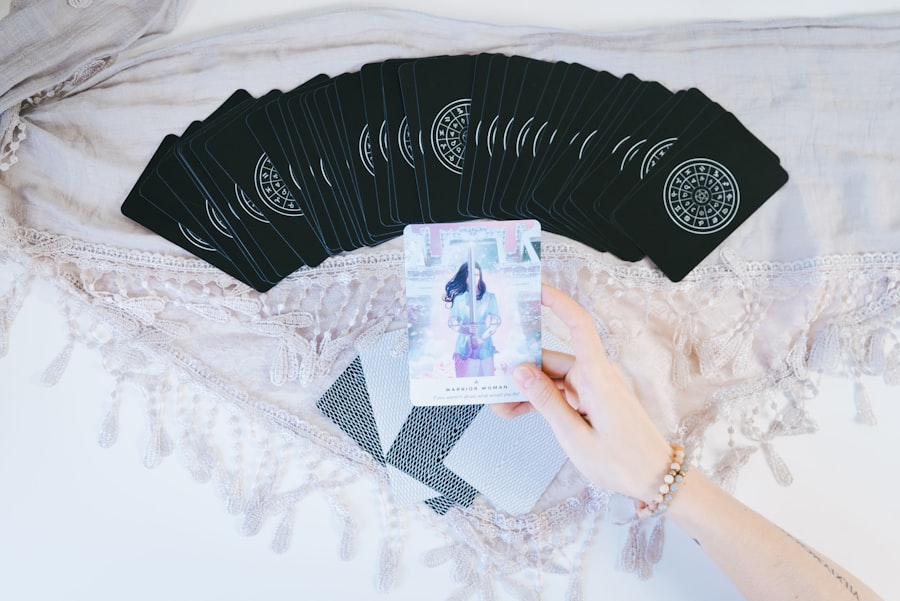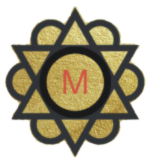
The Hierophant card, often depicted as a religious figure or a teacher, stands as a powerful symbol of tradition within the Tarot deck.
In many decks, the Hierophant is shown seated on a throne, flanked by two pillars that represent duality and balance.
His posture and attire suggest authority and wisdom, embodying the role of a mediator between the divine and the earthly realms. The imagery often includes religious symbols, such as keys or sacred texts, which further emphasize his connection to spiritual teachings and institutionalized faith. The significance of the Hierophant extends beyond mere representation; it encapsulates the essence of societal structures and the importance of adhering to established customs.
In a world that often values individualism and personal interpretation, the Hierophant serves as a reminder of the collective wisdom that has been passed down through ages. This card invites seekers to explore their roots, understand their cultural heritage, and recognize the value of tradition in shaping their identities. The Hierophant encourages individuals to seek guidance from established sources, whether they be spiritual leaders, mentors, or historical texts, reinforcing the idea that wisdom is often found in the teachings of those who came before us.
Key Takeaways
- The Hierophant represents tradition and conventional wisdom in tarot, symbolizing the importance of following established norms and beliefs.
- Modern tarot has evolved to incorporate new themes and interpretations while still honoring traditional symbolism and meanings.
- Contemporary tarot readings often integrate ancient wisdom and spiritual practices to provide deeper insights and guidance.
- The Hierophant’s role in tarot spreads emphasizes the need for structure, guidance, and adherence to traditional values in interpretations.
- Embracing tradition and modernity in tarot practice allows for a balanced approach that respects the past while embracing innovation and new perspectives.
The Evolution of Tradition in Modern Tarot
As society evolves, so too does the interpretation and application of traditional symbols within Tarot. The modern Tarot landscape reflects a dynamic interplay between ancient practices and contemporary perspectives. While the foundational meanings of cards like the Hierophant remain intact, their interpretations have expanded to encompass a broader range of experiences and beliefs.
This evolution is particularly evident in how practitioners approach the concept of tradition itself. In today’s context, tradition is not merely about adhering to established norms; it also involves questioning and redefining those norms to better align with personal values and societal changes. The rise of diverse Tarot decks has played a significant role in this evolution.
Artists and creators are increasingly drawing inspiration from various cultural backgrounds, spiritual practices, and personal experiences. This diversification allows for a richer understanding of traditional symbols like the Hierophant. For instance, some modern decks may depict the Hierophant as a figure who embodies inclusivity and progressive thought, challenging rigid interpretations of tradition.
This shift reflects a growing recognition that tradition can be both a source of strength and a catalyst for change, encouraging practitioners to honor their roots while also embracing new ideas and perspectives.
Incorporating Ancient Wisdom into Contemporary Tarot Readings

Incorporating ancient wisdom into contemporary Tarot readings involves a delicate balance between honoring traditional meanings and adapting them to fit modern contexts. The Hierophant serves as an ideal focal point for this integration, as his essence embodies the transmission of knowledge across generations. When interpreting this card in a reading, practitioners can draw upon historical teachings while also considering how those teachings resonate with current life situations.
For example, a seeker may find themselves grappling with questions about their spiritual path or moral dilemmas; invoking the wisdom of the Hierophant can provide clarity by connecting them to time-honored principles. Moreover, ancient wisdom can manifest in various forms during Tarot readings. This might include referencing historical texts, philosophical teachings, or even folklore that aligns with the themes presented by the Hierophant.
By weaving these elements into readings, practitioners can create a rich tapestry of meaning that resonates deeply with seekers. For instance, if a client is facing challenges in their career, drawing on traditional concepts of mentorship and apprenticeship—central themes associated with the Hierophant—can offer valuable insights into navigating professional relationships and seeking guidance from experienced individuals.
The Hierophant’s Role in Tarot Spreads and Interpretations
The Hierophant occupies a unique position within Tarot spreads, often serving as a bridge between the spiritual and material realms.
For example, in a three-card spread representing past, present, and future, the appearance of the Hierophant in the present position may indicate that the seeker is currently at a crossroads where traditional wisdom can illuminate their path forward.
Additionally, the Hierophant’s role extends beyond mere guidance; it can also represent conformity versus individuality. In readings where this card appears alongside more rebellious cards like The Fool or The Tower, it may prompt seekers to reflect on their relationship with societal expectations. Are they adhering to traditions that no longer serve them?
Or are they finding ways to honor their heritage while forging their own unique path? This duality enriches interpretations and encourages deeper introspection about how tradition influences personal choices.
Embracing Tradition while Embracing Modernity in Tarot Practice
The practice of Tarot is inherently fluid, allowing for an ongoing dialogue between tradition and modernity. Embracing this duality is essential for practitioners who wish to create meaningful connections with their clients while remaining true to their own beliefs. The Hierophant exemplifies this balance; he embodies respect for established systems while also inviting seekers to explore their own spiritual journeys.
By acknowledging both traditional teachings and contemporary insights, Tarot readers can foster an inclusive environment that honors diverse perspectives. In practical terms, this means that modern Tarot practitioners can incorporate elements such as intuitive insights, personal experiences, and even psychological frameworks alongside traditional interpretations. For instance, when reading for someone grappling with issues related to authority or conformity—common themes associated with the Hierophant—practitioners might draw upon modern psychological theories to provide additional context.
This approach not only enriches the reading but also empowers seekers to navigate their challenges with greater awareness and agency.
The Hierophant’s Wisdom: Balancing Tradition and Innovation in Tarot Reading

The wisdom embodied by the Hierophant lies in his ability to navigate the delicate balance between tradition and innovation within Tarot reading. He serves as a reminder that while it is essential to honor historical teachings and cultural practices, it is equally important to adapt these lessons to fit contemporary realities. This balance is crucial for fostering a deeper understanding of oneself and one’s place within the larger tapestry of existence.
In practice, this means that Tarot readers can draw upon the rich symbolism associated with the Hierophant while also encouraging clients to question established norms that may no longer resonate with them. For example, if a client feels pressured to conform to societal expectations regarding career choices or relationships, invoking the Hierophant’s wisdom can prompt discussions about how tradition can be reinterpreted in ways that honor individual desires and aspirations. By facilitating this dialogue between past and present, practitioners empower seekers to carve out their own paths while remaining connected to their roots.
Ultimately, the Hierophant serves as both a guide and a catalyst for transformation within Tarot practice. His presence encourages practitioners to explore how ancient wisdom can inform modern experiences while also challenging them to redefine what tradition means in an ever-changing world. Through this exploration, seekers can find clarity, purpose, and empowerment as they navigate their unique journeys through life.
If you are interested in exploring the symbolism and meaning behind different tarot cards, you may also enjoy reading about






